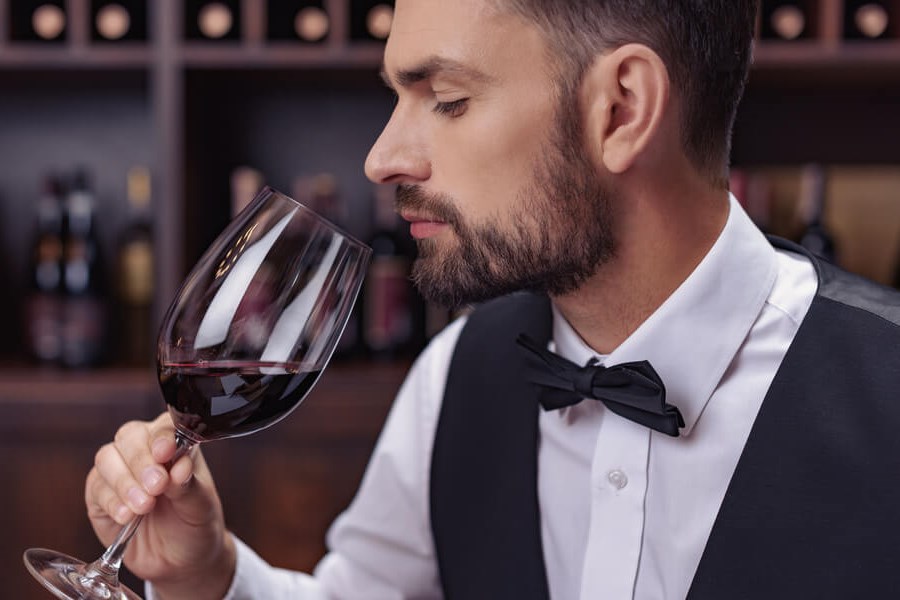The Wine Palate of most individuals is untrained! Worry not! Learn to train your Wine Palate today!

Share this article
Have you been to a wine tasting and heard the sommelier describe the aroma and flavor of a particular wine? Yet when you taste the wine you can’t detect the subtle nuances described such as blueberries, oak, and honey? If you’re shaking your head in agreement, your wine palate is untrained.
However, don’t be alarmed, you are not the only one. Moreover, wine palate training is possible with practice and time. Furthermore, once trained, you will greater enjoy the pleasures of the palate, as well as drinking and eating.
Wine Palate
In wine tasting, the wine palate is; the ability to identify and taste the different characteristics of wine, by using your sense of smell and taste buds.
Before you embark on wine palate training, it is important to first practice the basics of wine tasting. The following wine tasting tips will not only train and refine your palate. But also sharpen your ability to recall wines.
Basic Steps to Wine Tasting
Look
Study the wine under neutral lighting, noting the intensity and shade of color, and the viscosity of the wine. In addition, studying the wine helps to establish if it’s a sparkling or a still wine. Remember that color informs the age of the wine. For example, as red wine ages, the color becomes transparent and slightly faded. While white wines become more yellow and brown as they age.
Smell
By taking a good, long sniff of the wine, you discover the first impression of the wine’s primary aroma. Furthermore, since it’s difficult to taste without smelling, taking a sniff of the wine prepares your taste buds for tasting. When smelling a wine always start from big to small flavors to avoid getting frustrated by trying to be too specific. For instance, with a red wine, picture red, black or blue fruits e.g. strawberries, blueberries, etc. And with white wines consider tropical fruits, citrus, and orchards, etc.
Learn About Improving Wine Tasting Experience!
The palate is memory trained and influenced by culture. Meaning that over your lifetime, your palate has developed likes and dislikes.
Taste
Tasting the wine helps you to detect a wine’s sweetness, bitterness, saltiness or sourness. As well as assess the flavors you had identified when smelling the wine. Likewise, tasting allows you to feel the texture of the wine and decide if it’s full, medium or light bodied. Furthermore, tasting enables you to measure the alcohol levels in the wine (cool/warm, heat) and the tannins (astringency).
Conclude
Create a complete profile of the wine, by describing the wine based on your assessments of look, smell, and taste. Consequently, write the assessment and profile of each wine, for reference. And work on memorizing the key aspects of the wine.
Wine Palate Test
Once you master wine tasting, the next step is to take a wine palate test. The palate is memory trained and influenced by culture. Meaning that over your lifetime, your palate has developed likes and dislikes based on what you have been eating and drinking. So, it’s important to take a wine palate test, to pinpoint your palate preferences.
There are several free wine palate tests available on the internet that can help you discover your palate preference. Alternatively, you can make a list of the things you enjoy eating/drinking and identify their characteristics. Once you make the list, it will guide you in knowing what you like, do you like sweet and creamy or tangy and sour? Once you know your palate preference, you can now embark on wine palate training.
Wine Palate Training
Seek Opportunities To Regularly Taste Wine
According to Scott Carney, there is no substitute for popping corks! The only foolproof way to develop your wine palate is to taste wine as often as possible.
Incredibly, you don’t have to spend a ton of money buying wine for tasting. You can attend a special tasting at your local retailer–most wine retailers open multiple bottles of wine and offer free tastings. Alternatively, you can join a local wine tasting group.
By tasting wine and writing notes of your wine experience, you will discern features in wine that were not noticeable at first.
Learn The Art of Aspirating When Wine Tasting
Aspirating introduces oxygen into the wine, releasing more of the wine’s flavors and characteristics. The art of aspirating requires you to roll the wine over your tongue and suck air into it. Although it may sound daunting, with practice, you will form a habit. Begin by observing as someone else aspirates their wine and copy them.
Document Your Wine Experience
Taking notes will ensure you remember as much as possible from your wine tasting. Also, writing assists you to identify distinct aspects of the wine and refines your wine vocabulary. Thus, you will discuss wine with more confidence, and better identify hints and notes.
Improving your wine palate is a multi-sensory activity. Anybody with an interest in wine palate training can do it. However, to train your wine palate successfully, you must begin by knowing your palate preference. Ultimately, understand and exercise the basics of wine tasting. Once you train your wine palate, you are sure to reap the rewards!